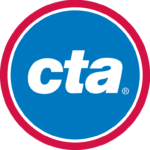 The CTA’s Brown and Purple Line services were halted in the early morning after two CTA trains collided on Chicago’s North Side.
The CTA’s Brown and Purple Line services were halted in the early morning after two CTA trains collided on Chicago’s North Side.
Fourteen Taken to Hospital After CTA Trains Collide
On Sept. 24, 2019, at approximately 9:15 a.m., a southbound Brown Line train collided with a southbound Purple Line train north of the Sedgwick station at 1536 N. Sedgwick St. in Chicago’s Old Town neighborhood, according to a statement released by the CTA.
Some passengers on the Brown Line train were reportedly thrown to the floor when the two CTA trains collided. Fourteen people were taken to area hospitals to be checked or treated. Service was suspended between the Fullerton and Merchandise Mart stops with the power turned off while emergency crews dealt with the matter.
The Chicago Fire Department declared the situation under control just before 10:00 a.m. Normal service began resuming around 10:30 a.m.
How Public Transportation Injury Cases Can Be Challenging
Chicagoans take more than 500 million public transportation rides each year. Because of the large number of trips taken, the risk of injury is not insignificant. CTA trains can collide or derail, buses can crash, and commuters can slip and fall in bus and train stations.
Additionally, buses and trains are classified as “common carriers” under Illinois law because they are paid to transport the public. As such, they are subject to a higher standard of care for the safety of their passengers. Because of this, bus drivers and train engineers are expected to be more cautious. Failure to exercise this higher standard of care could be considered negligence, and those who get injured because of this negligence may be able to pursue a personal injury claim against the CTA, Metra, or another company operating a common carrier.
But obtaining financial compensation for a public transportation accident can prove challenging. In certain cases, there may be multiple parties responsible for an accident, such as defective train and traffic signals, operator distraction, poorly maintained tracks, equipment failure, and overloaded trains and buses. In certain cases, an outside driver may be at fault for an incident. In these situations, it might not be certain whether to pursue the common carrier, an at-fault driver, or some combination of both.
Let a Personal Injury Attorney Fight for You
This is where a personal injury lawyer can make a difference. An attorney who has experience with public transportation accidents can promptly initiate an investigation in order to determine exactly what happened in such an incident. Only by determining the cause of an accident involving CTA trains can an injured person properly identify the responsible party. This is crucial to do in a timely manner because plaintiffs who fail to file suit within the time specified by law will be forever barred from obtaining fair compensation for their injuries.
Given the challenges involved in pursuing a personal injury claim for a public transportation accident, injured parties might benefit from retaining the services of the Chicago personal injury lawyers at GWC Injury Lawyers.
With more than $2 billion recovered for our clients over more than four decades in practice, GWC is one of the leading Personal Injury and Workers’ Compensation law firms in Illinois.
If you have been wrongfully injured, because CTA trains collided or in some other way, please contact GWC today to schedule a free consultation with an attorney. You may call our office at (312) 464-1234 or click here to chat with a representative at any time.
<< BACK TO BLOG POSTS